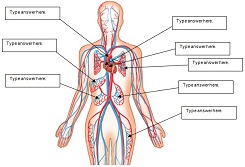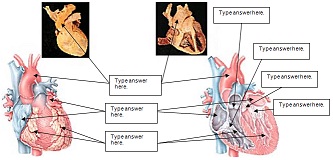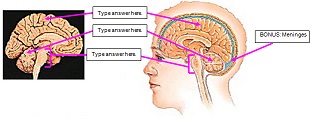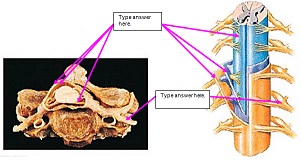Solution-What are the main functions of the cardiovascular
Cardiovascular System Lab- Week Six
INTRODUCTION
The cardiovascular system consists of blood, blood vessels, and the heart. As you learn about the various diseases that affect the cardiovascular system, it is important for you to understand the structures that can be affected by disease. Complete this lab to become familiar with a healthy system and to identify diseases related to this system.
PART ONE: BASIC FUNCTIONS
Provide brief answers to the following questions to help you get acquainted with the basic functions of a healthy cardiovascular system. Refer to Ch. 23 in Microbiology: Principles and Explorations.
1. What are the main functions of the cardiovascular system?
2. Which types of bacteria are considered normal cardiovascular system microflora?
3. Which structure of the cardiovascular system is particularly susceptible to bacterial infection?
PART TWO: BASIC STRUCTURES
Refer to Ch. 23 in Microbiology: Principles and Explorations to help you identify the selected cardiovascular system structures in the following diagram.

Visit Chapter 23 of Microbiology: Principles and Explorations in WileyPlus to view an in-depth presentation of a healthy cardiovascular system by completing the following steps:
• Select the Chapter 23 WileyPlus reading link located on your student Web page.
• Locate the heading Chapter Review.
• Select the Anatomy Overview: The Cardiovascular System link.
• Complete this lab as you explore the Cardiovascular System multimedia piece.
Cardiovascular System: The Heart
Roll over each component of the Cardiovascular System multimedia piece. Roll over and click the heart. Refer to the Heart component of the multimedia piece and Ch. 23 in Microbiology: Principles and Explorations to label the structures in the following diagrams of a healthy cardiovascular system.

PART THREE: INVESTIGATE AND APPLY
Select one of the following diseases related to the cardiovascular system, discussed in Ch. 23 of Microbiology: Principles and Explorations:
• Rheumatic fever
• Bacterial endocarditis
Describe the causal agent of the selected disease, mode of transmission, disease characteristics, and the component(s) of the cardiovascular system that are damaged by the disease.
Nervous System Lab- Week Seven
INTRODUCTION
The nervous system has two components: the central nervous system, which consists of the brain and spinal chord; and the peripheral nervous system, which is composed of nerves. As you learn about the various diseases that affect the nervous system, it is important for you to understand the structures that can be affected by disease. Complete this lab to become familiar with a healthy system and to identify diseases related to the brain, spinal chord, and nerves.
PART ONE: BASIC FUNCTIONS
Provide brief answers to the following questions to help you get acquainted with the basic functions of a healthy nervous system. Refer to Ch. 24 in Microbiology: Principles and Explorations.
1. How do the meninges and cerebrospinal fluid (CSF) function together in a healthy nervous system; what are their roles?
2. What is the blood-brain barrier?
3. What normal microflora reside in the nervous system?
PART TWO: BASIC STRUCTURES
Visit Chapter 24 of Microbiology: Principles and Explorations in WileyPlus to view an in-depth presentation of a healthy nervous system by completing the following steps:
• Select the Chapter 24 WileyPlus reading link located on your student Web page.
• Locate the heading Chapter Review.
• Select the Anatomy Overview: The Nervous System link.
• Complete this lab as you explore the Nervous System multimedia piece.
Nervous System: The Brain
Roll over each component of the Nervous System multimedia piece. Click on the brain. Refer to the Brain component of the multimedia piece to label the structures in the following diagram of a healthy brain.

Nervous System: The Spinal Cord
Click the icon in the upper left corner of the Brain diagram to return to the main menu in the Nervous System multimedia piece. Click the Spinal Cord component to navigate to the Spinal Cord diagram. Refer to the Spinal Cord diagram of the multimedia piece to label the following structures of a healthy spinal cord.

PART THREE: INVESTIGATE AND APPLY
Several different pathogenic bacteria can cause bacterial meningitis, an infection and inflammation of the meninges. Select any form of bacterial meningitis discussed in Ch. 24 of Microbiology: Principles and Explorations, and answer the following:
1. Which form of bacterial meningitis did you select and what is its causal agent?
2. What symptoms are typical of this form of meningitis?
3. Which age group or population is most susceptible to this form of meningitis and do typical activities within that age group have any influence on a person contracting the disease?
